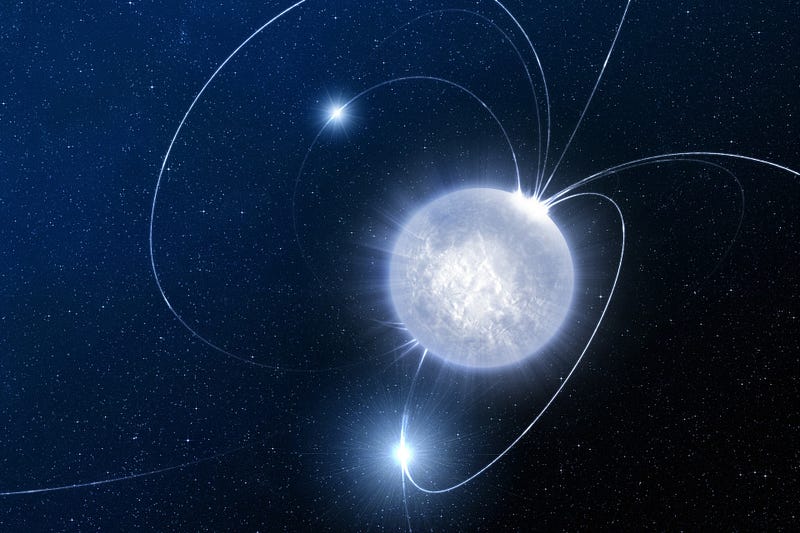Exploring the Mysteries of Strange Stars: Beyond Neutron Stars
Written on
Chapter 1: The Enigma of Neutron Stars
Neutron stars are some of the most intriguing entities in the cosmos. These stellar remnants emerge from the collapse of massive stars and exist on the brink of transforming into black holes.

During their formation, the gravitational forces are so intense that electrons merge with protons, resulting in a structure predominantly composed of stable neutrons. The Pauli Exclusion Principle prevents these neutrons from collapsing into black holes by prohibiting fermionic particles from occupying the same quantum state simultaneously. In simpler terms, it implies that no two fermions can share the same position at once.
Beneath a thin layer of iron, this neutron-rich composition creates a substance known as neutronium, recognized as the densest material discovered thus far—at least, according to our current understanding.
Section 1.1: The Core of Neutron Stars
At the heart of neutron stars, the pressures may escalate to such extreme levels that neutrons start to overlap, leading to their disintegration into up and down quarks. This quark matter can endure further compression without contravening the Pauli Exclusion Principle, resulting in an unusual form of matter—superfluid and denser than neutronium.
Subsection 1.1.1: The Concept of Strange Matter
As the neutrons dissolve, a phenomenon known as "strangeness" occurs. It is theorized that a portion of the down quarks transforms into strange quarks, leading to a unique material referred to as strange matter. This configuration permits even greater compression and stability, potentially allowing a star composed entirely of this substance to persist indefinitely—well, as close to “forever” as possible.
Chapter 2: The Fascination with Quark-Gluon Plasma
The most astonishing aspect of neutron and strange stars may still be undiscovered! It is suggested that the peculiar matter at their cores resembles a quark-gluon plasma, a state of matter theorized to have existed just after the Big Bang, when it was the sole form of matter present.

We have verified the existence of quark-gluon plasma in particle accelerators, indicating that such conditions are plausible. During the Quark Epoch, the universe was extremely dense and hot, causing the electromagnetic and weak nuclear forces to merge into a single force known as the electroweak force. Thus, at that time, the universe was governed by three fundamental forces instead of four.
The hypothesis that neutron and strange stars harbor miniature environments reminiscent of the early universe, with a distinct arrangement of fundamental forces, is truly mind-boggling. These electroweak cores would emit radiation, which, in conjunction with Pauli’s Exclusion Principle, helps to maintain the stability of neutron stars.
Discover more about the extreme nature of neutron stars and their fascinating properties in the video "Neutron Stars: The Most Extreme Objects in the Universe."
Explore the intriguing possibility of quark stars in "Could Quark Stars be the Engines of Self-Replicating Strange Matter?" to gain deeper insights into these cosmic phenomena.